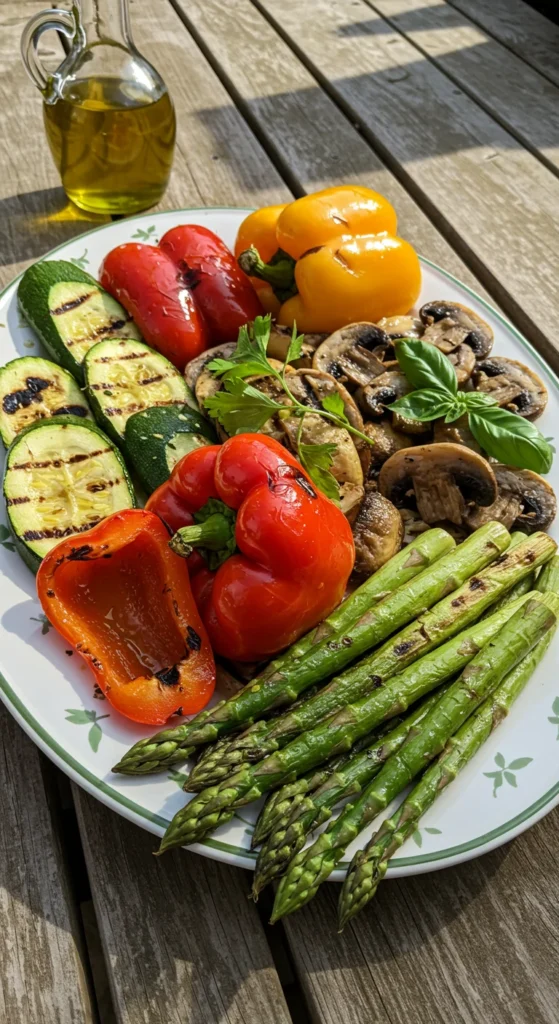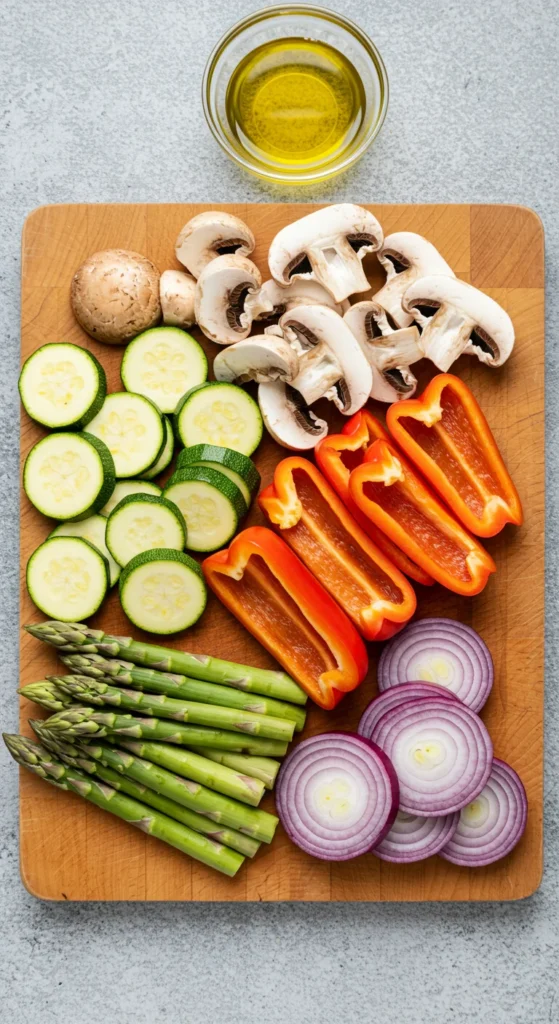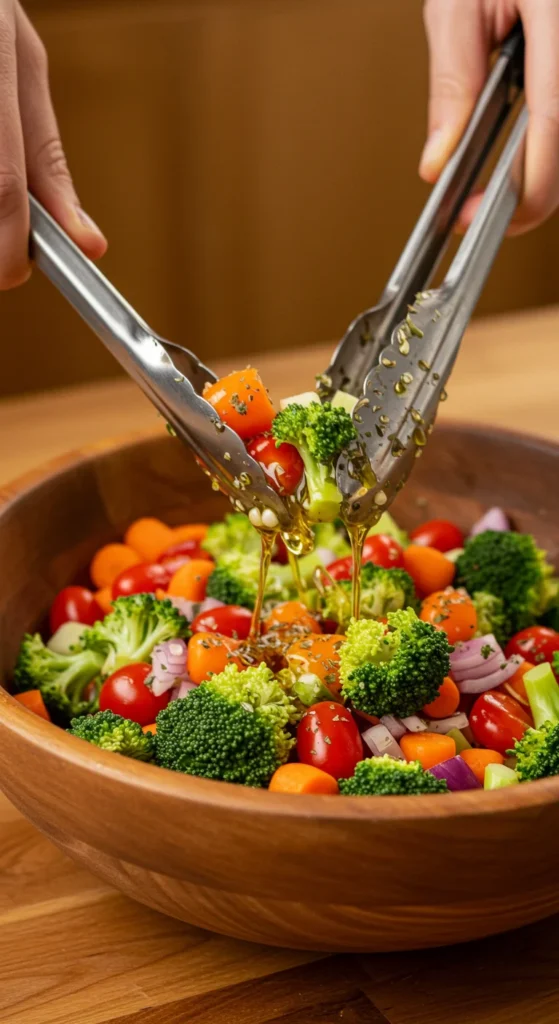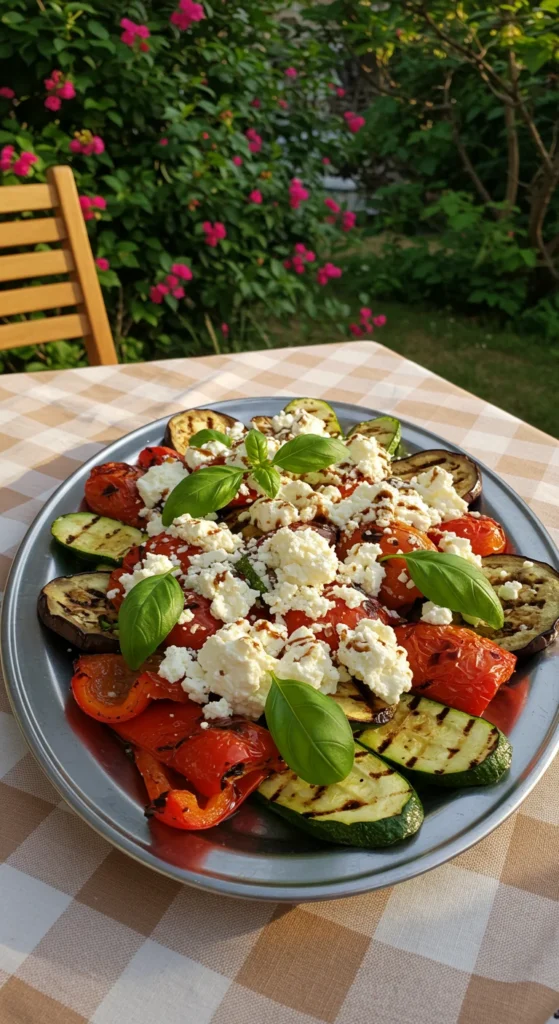There’s something irresistible about grilled vegetables — smoky, slightly charred, and bursting with natural sweetness. They’re the perfect side dish for summer barbecues or weeknight dinners. But let’s be honest — it’s easy to turn those beautiful veggies into dry, shriveled disappointments if you’re not careful.
The secret? A few smart techniques that keep your vegetables juicy, flavorful, and full of life. Whether you’re grilling zucchini, peppers, or asparagus, these simple steps will make you a veggie-grilling pro.

Step 1: Choose the Right Vegetables
Not all veggies grill equally. Some are naturally firmer and can handle direct heat, while others need a little extra care.
Best Vegetables for Grilling:
- Zucchini & yellow squash: Tender and quick-cooking.
- Bell peppers: Sweet and flavorful with charred edges.
- Asparagus: Perfectly smoky in minutes.
- Mushrooms: Juicy and meaty, great for soaking up marinades.
- Onions: Sweet and caramelized when grilled slowly.
- Corn on the cob: A summer classic with smoky sweetness.
Avoid overly delicate veggies like spinach or lettuce unless you’re grilling them quickly or using a grill basket.

Step 2: Cut and Prep for Even Cooking
The key to perfectly grilled vegetables is uniform size and shape — they should cook evenly and stay tender without burning.
- Cut thicker veggies (like zucchini or eggplant) into ½-inch slices.
- Keep smaller ones (like cherry tomatoes or mushrooms) whole or thread them on skewers.
- Leave the skin on whenever possible — it helps retain moisture.
Before grilling, pat the vegetables dry. Excess moisture causes them to steam instead of sear, leading to a mushy texture.
Pro tip: Use a grill basket or skewers for smaller veggies to prevent them from falling through the grates.
Step 3: Use Oil (But Not Too Much)
A light coating of oil is essential for juicy, flavorful vegetables. It prevents sticking, encourages caramelization, and helps seasoning adhere.
The perfect method:
- Place your prepped veggies in a large bowl.
- Drizzle with olive oil or avocado oil (1–2 tablespoons is plenty).
- Toss to coat evenly — every piece should glisten, not drip.
Then season with:
- Salt and pepper
- Garlic powder or smoked paprika
- Fresh herbs like thyme, rosemary, or oregano
For an extra layer of flavor, toss in a splash of balsamic vinegar or lemon juice just before grilling.

Step 4: Get the Grill Temperature Just Right
Temperature can make or break your grilled vegetables. Too hot, and they’ll burn before softening. Too cool, and they’ll dry out without getting those beautiful grill marks.
Ideal heat:
- Medium-high (375°F–425°F / 190°C–220°C) for most vegetables.
- For dense veggies (like carrots or potatoes), start over indirect heat and finish on direct heat.
Make sure to preheat your grill for at least 10 minutes before adding the vegetables. A hot grill sears quickly, locking in moisture and flavor.
Step 5: Timing Is Everything
Each vegetable has its own ideal grill time. Overcooking is the fastest way to dry them out, so use this quick guide:
| Vegetable | Grill Time (per side) |
| Zucchini / Eggplant | 3–4 minutes |
| Bell Peppers | 4–5 minutes |
| Asparagus | 2–3 minutes |
| Mushrooms | 4–6 minutes |
| Corn on the Cob | 10–12 minutes (turn often) |
| Onions | 5–7 minutes |
Flip halfway through and move veggies around as needed for even cooking.
Pro tip: Close the grill lid for part of the time — this traps heat and gently steams the inside while charring the outside.

Step 6: Finish with Flavor
Once your veggies are tender with light char marks, it’s time to elevate them with a finishing touch.
Try these simple add-ons:
- Drizzle: A splash of lemon juice, balsamic glaze, or herbed olive oil.
- Topping: Crumbled feta, grated Parmesan, or chopped fresh herbs.
- Texture: A sprinkle of toasted nuts or seeds adds crunch.
Don’t skip the seasoning at the end — a touch of salt or acidity brings everything to life.

Step 7: Serve and Enjoy (Hot or Cold!)
The beauty of grilled vegetables is their versatility — they’re delicious both warm and chilled.
Serve them as:
- A side dish with grilled meats or fish.
- A topping for grain bowls, pasta, or salads.
- A main course with hummus or flatbread for a plant-based meal.
Leftovers? Store them in the fridge for up to 4 days and toss them into omelets, wraps, or sandwiches.
Final Thoughts
Grilling vegetables is all about balance — enough heat to create smoky flavor, enough care to preserve moisture. With these tips, you’ll never have to settle for dry, bland veggies again.
So fire up the grill, grab your favorite produce, and let those colors (and flavors) shine!



Leave a Reply